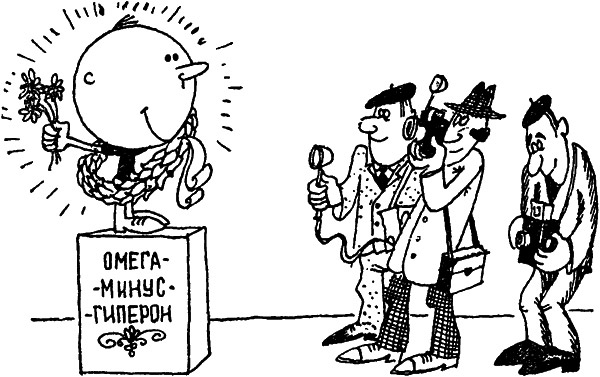
Electronic english version since 2022 |
The newspaper was founded in November 1957
| |
|
Number 37 (4685) |
I want to know everything!
"Kinematics" by Herzen Kopylov
A book should be either clear or rigorous;
it is impossible to unite these two requirements.
Bertrand Russell
Everything that can be said at all must be said clearly;
about what cannot be clearly said, one should remain silent.
Ludwig Wittgenstein
What should popular science literature be like? Before answering this question, let's try to answer another one: what kind of reader should it be aimed at? Associate Professor V.D.Kukin that taught us statistical mechanics in the fourth year (and later became a professor), said that the degree of understanding can be very different: someone definitely needs to know at the level of quantum mechanics and for others, the phrase "Mighty nature is full of wonders!" is enough.
Let's put aside the extremes. The reader that wants to get to the "very essence" needs textbooks, but the undemanding reader needs comics. The potential consumer of popular science literature is somewhere in the middle. The 19th century mathematician Joseph Gergonne said: "You cannot boast that you have said the last word in a theory if you cannot explain it in a few words to the first person you meet on the street." The people should know what their scientists are engaged in. This was the foundation of the book series "Eureka" and "Paths to the Unknown", "Small Library" of the magazine "Kvant" and numerous brochures of the "Knowledge" series. Simplifications during popularization are possible and inevitable, but where to stop is a purely technical question and should be resolved in a working manner.
But there is another, opposite point of view on this matter. It is adhered to by the so-called "purists" that believe that any simplification gives the reader only the illusion of understanding. With great disapproval they look at the Prometheans that steal the fire of knowledge from the scientific Olympus, they think, they say that they bring it to people, but in fact, they bring only cooled ashes. It's clear that purists don't write popular science books. But there are exceptions and one of them is Herzen Kopylov's unique book "Just Kinematics".
In the mid-1960s, the theoretical physicist with fifteen years of experience Herzen Kopylov decided to give modern schoolchildren an idea of real, "adult" physics: to show how real physicists obtain real scientific results from the laws of conservation of energy and momentum. So that the reader, like the readers of Ya. I. Perelman's "Entertaining Physics" in his time, "thought nothing" to repeat similar calculations himself, without going beyond the limits of school knowledge... With one, however, reservation: the basics of the theory of relativity at school at that time they had not yet been passed and the author gave them himself, not being afraid to turn a popular science book into a textbook.
From chapter to chapter, the author brings the reader up to date. How many particles are known, how they were discovered, how to determine the energy of a particle from its track in a bubble chamber, how to use the laws of conservation of charge and other quantum numbers and determine what decays are possible. How particles are born in accelerators and at what energies, how neutral particles were discovered that do not leave traces in track detectors, how the famous omega-minus hyperon was discovered, how resonances were discovered... Do as I do, the author suggests to the young reader, and it will work out.
Have you succeeded? Professor M.I.Podgoretsky, in the preface to the book, answered this question positively: "It is very difficult to find such a way of presentation that some area, a piece of science, without losing anything in essence, becomes clear to a non-specialist. This task is often considered completely impossible. It appears, however, that this extreme view is still wrong. In any case, the author of the book having offered it to the reader has coped with this task."
Professor M.I.Kaganov, that himself did a lot to popularize science, also positively estimated Herzen Kopylov's experiment: "I opened this book and read it with pleasure from beginning to end. I smiled many times, read many phrases to my colleagues..."
Thus, at least for professors, Herzen Kopylov's "Kinematics" turned out to be understandable. But seriously, today, it is impossible to say how many young men and women grew up reading this book and to name everyone for whom it became an introduction to the profession. On my own behalf, I can add that I learnt about "Kinematics" already at a mature age, to put it mildly, but as a person infinitely far from physical experimentation, I learned from it a lot of interesting and useful things for myself.
Half a century has passed since the first edition of Herzen Kopylov's book. No one, it seems, dared to follow the path he laid out. And Herzen Isaevich himself never returned to these experiments.
P.S. Illustrativeness and entertainment - these two requirements in the book series "Eureka" were strictly followed. Here, for example, how the discovery of omega-minus hyperon (in Vera Chernogorova's book "Riddles of the Microworld") was depicted by artist Konstantin Moshkin:

But in the book by Herzen Kopylov, published in 1969 by "Atomizdat", the situation looks somewhat different. This is what physicists from the Brookhaven laboratory saw in the image from the bubble chamber before they recognized the "autograph" of that same omega-minus hyperon in the intricacies of the tracks - its entire short life, from birth to decay, fit into this image:

About the books of Vera Chernogorova - in one of the upcoming issues.
Alexandr RASTORGUEV